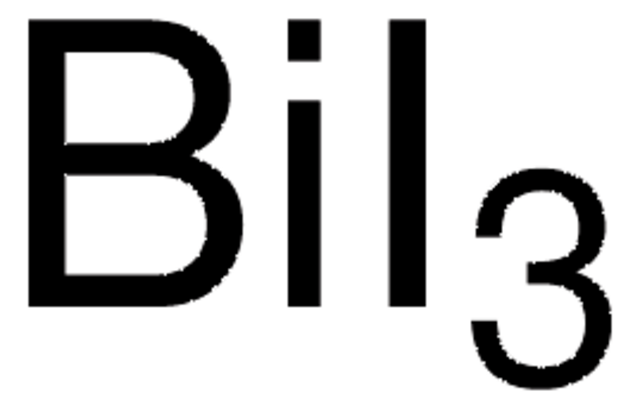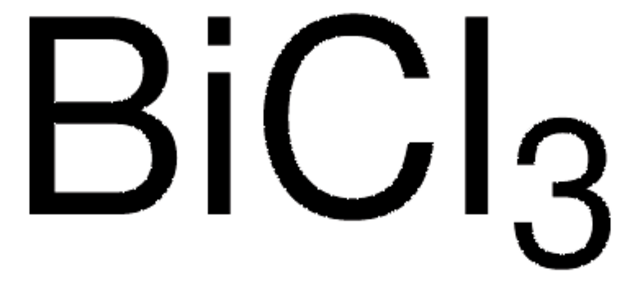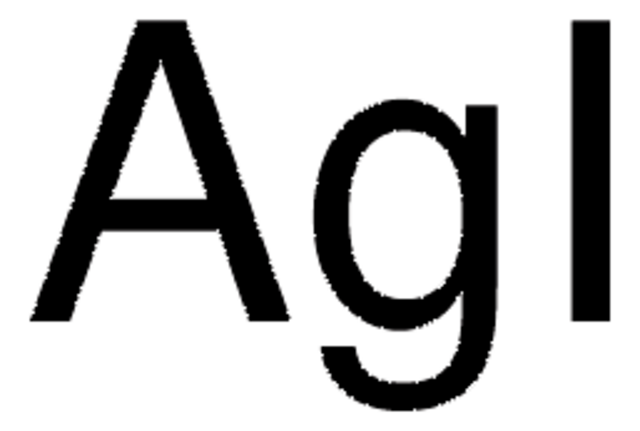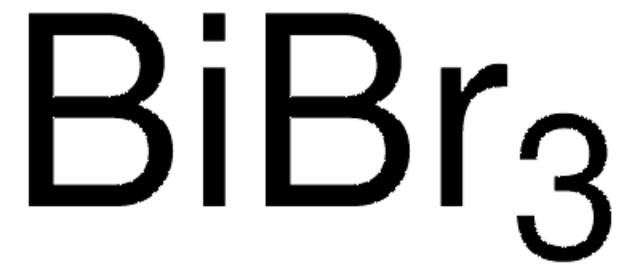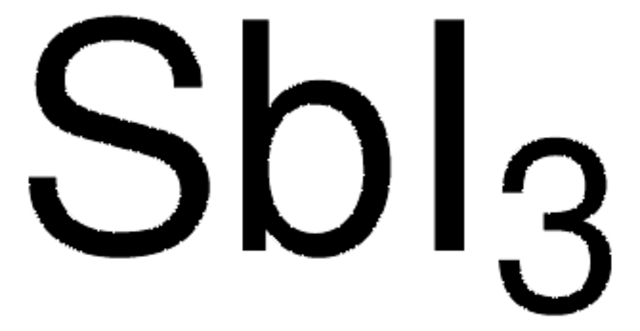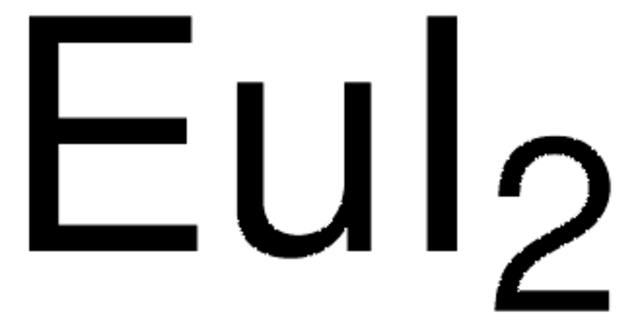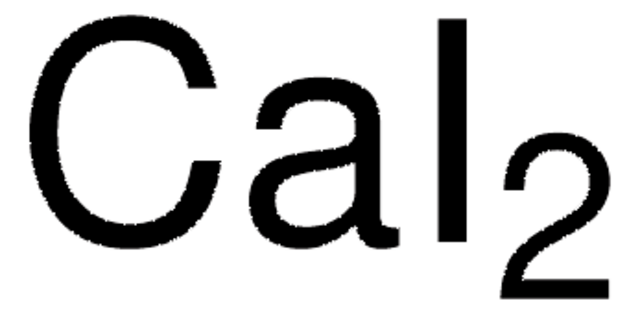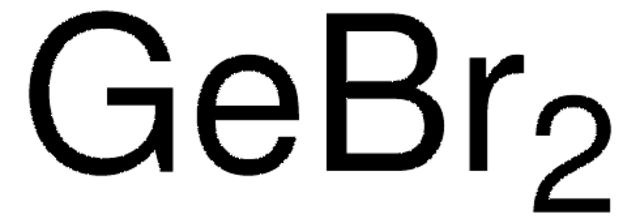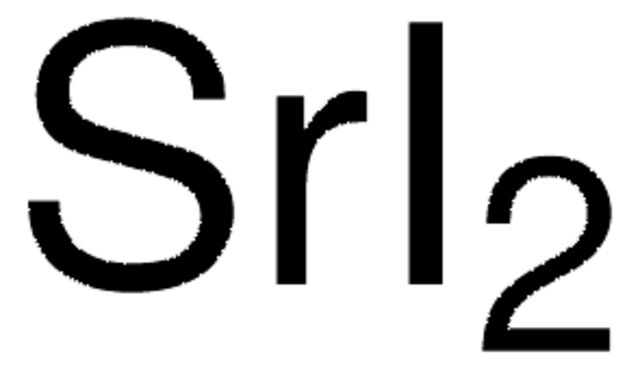229474
Bismut(III)-iodid
≥99.998% trace metals basis
Synonym(e):
Bismuth triiodide, Triiodobismuthane
About This Item
Empfohlene Produkte
Qualitätsniveau
Assay
≥99.998% trace metals basis
Form
powder and chunks
Eignung der Reaktion
reagent type: catalyst
core: bismuth
Verunreinigungen
≤15.0 ppm Trace Metal Analysis
mp (Schmelzpunkt)
408 °C (lit.)
Dichte
5.78 g/mL at 25 °C (lit.)
SMILES String
I[Bi](I)I
InChI
1S/Bi.3HI/h;3*1H/q+3;;;/p-3
InChIKey
KOECRLKKXSXCPB-UHFFFAOYSA-K
Suchen Sie nach ähnlichen Produkten? Aufrufen Leitfaden zum Produktvergleich
Signalwort
Danger
H-Sätze
Gefahreneinstufungen
Eye Dam. 1 - Skin Corr. 1B
Lagerklassenschlüssel
8A - Combustible corrosive hazardous materials
WGK
WGK 3
Flammpunkt (°F)
Not applicable
Flammpunkt (°C)
Not applicable
Persönliche Schutzausrüstung
Eyeshields, Faceshields, Gloves, type P3 (EN 143) respirator cartridges
Hier finden Sie alle aktuellen Versionen:
Besitzen Sie dieses Produkt bereits?
In der Dokumentenbibliothek finden Sie die Dokumentation zu den Produkten, die Sie kürzlich erworben haben.
Kunden haben sich ebenfalls angesehen
Unser Team von Wissenschaftlern verfügt über Erfahrung in allen Forschungsbereichen einschließlich Life Science, Materialwissenschaften, chemischer Synthese, Chromatographie, Analytik und vielen mehr..
Setzen Sie sich mit dem technischen Dienst in Verbindung.